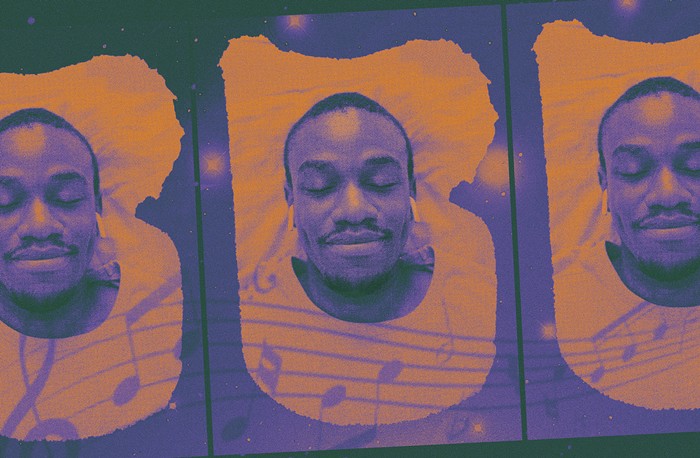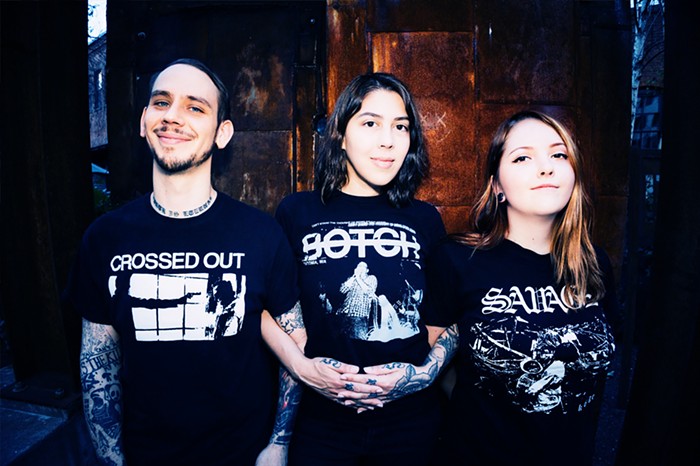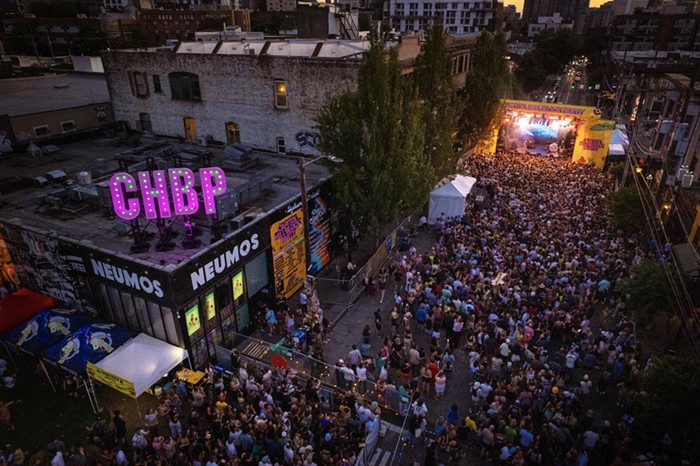"Everybody have a set list?" asks bandleader and composer Jim Knapp. The musicians—trumpeters, trombone players, saxophonists, the rhythm section—check their music desks, rummage, and confer. The stage is crowded; the audience, seated just a few feet away, peers into the minute details of big-band jazz.
Knapp explains a tricky passage to the front line of trombones, "I'm conducting that [rhythmic figure] as three..." as fragments of the first tune, his slinky "Kennewick, Man," bounce back and forth amid the usual warm-up scales and snippets. French hornist Tom Varner trills a few notes; bassist Phil Sparks ("Bass solos are important and a relief from too much horn blowing, which can tire the ears and the players," Knapp tells me later) requests more light, while behind the piano John Hansen quietly pokes at the intro to the bop classic "Prince Albert." Parts of a new arrangement pass from hand to hand. One trumpeter folds his arms and studies his music while another swigs some water.
Holding down every first Monday at the Seattle Drum School, the Jim Knapp Orchestra has top-notch players, including trumpeter Jay Thomas, saxophonists Mark Taylor and Travis Ranney, and, in a special appearance, New York–based trumpeter Ingrid Jensen.
Generally declared dead every decade or so, big-band jazz not only stays alive but thrives, despite the utter absence of regular monetary reward. Why do musicians like to play this music? It's not for the money. Later Knapp tells me, "My theory is that most musicians are very overqualified for their jobs," such as playing sessions and jingles. He elaborates, "the music we play is technically challenging, but it swings, and musicians like that." Listeners do, too.
The Jim Knapp Orchestra plays Mon Aug 7 (Seattle Drum School, 12510 15th Ave NE, 364-8815, 8 pm), $5/$10.


















